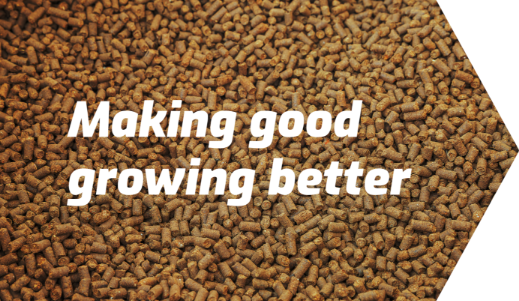
For many turf managers and organic growers, it’s an all-too-familiar challenge to work with a stagnating budget while costs continue to rise.
Walking this “fiscal tightrope” requires quite a bit of skill and creativity, and the more methods you can employ to leverage your current resources in order to provide adequate nutrition for your property, the better.
Interestingly enough, the best resource you can tap into for promoting soil growth and health is literally right under your feet – yes, we’re talking about microbes, or the countless billions of microorganisms that call the soil their home.
Also known as soil life, soil microbes, biota or soil fauna, this extremely diverse community of organisms spend all of their life cycle within the soil, and they perform a wide range of functions in order to maintain soil health and fertility. Of the three major components of soil – minerals, organic matter and biota – this staggeringly complex web of microorganisms has been the least understood by soil ecologists, and in many ways is still considered to be a new frontier for research and discovery.
How does soil biota influence the quality of the soil?
This diverse collection of organisms – ranging from mites and earthworms to fungi and bacteria – act as a non-stop production facility, carrying out a highly sophisticated assortment of tasks in order to ensure proper soil health and composition. To give you a feel for the degree of complexity involved in this organic operation, consider this: even within just a handful of soil, there is an oxygen gradient present (from the center to the edges) that provides the optimal habitat for each of the various lifeforms to exist and carry out their roles.
Bacteria in particular are found in abundant quantities in the soil; in fact, the total amount of bacteria (both good and bad) present in the soil constitutes the highest biomass of all soil organisms. These tiny little workers:
- consume and release carbon,
- build soil structure,
- convert nitrogen,
- create heat to warm root zones,
- ensure the bioavailability of minerals, and
- are involved in facilitating the many chemical changes that take place within the soil.
Another important group of soil microorganisms is fungi, which play a key role in the decomposition of organic matter. Fungi degrade and then assimilate cellulose, which is the main component of the cell walls of plants. Comprised of clusters of cells that tend to grow as long strands or threads, fungi also contribute to the creation of humus, and increase nutrition availability for plants through expanding the area within which the roots are able to reach the water and nutrients that are in the soil.
Perhaps the most amazing thing about soil biota is that it is a 24/7 operation, incessantly carrying out these various roles and life cycles in order to produce quality turf or improved crop yields. If you want to maximize the “partnership” you have with these tiny little helpers, here are three key points to keep in mind:
- Avoid heavy treatments of harsh synthetic chemical fertilizers, pesticides and/or soil fungicides, as these materials can kill off beneficial microbes, or at the very least upset the balance between these helpful microorganisms and soil-threatening pathogens.
- The majority of soluble synthetic fertilizers are salt-based, and any high applications of these materials can literally dry out soil microorganisms, reducing the population of biota to unfavorable numbers. Natural and organic fertilizers such as Nature Safe alleviate this problem entirely, as they are specially formulated to feed this microbial population.
- Slow-release fertilizers (e.g., organic nitrogen fertilizer) supply nutrients at a steadier rate, which is more conducive to maintaining microbe populations with virtually no disturbance to soil life.
Take control
Nature Safe organic fertilizer is specifically designed to promote optimal levels of microbial growth and activity. And, because we’re the only organic fertilizer company that controls and sources our basic ingredients from beginning to end, Nature Safe offers a reliable, consistent product every time. With the help of Nature Safe, you can put our highly capable team of microorganisms to work helping you to maintain healthy, robust turf or to positively impact your yields and crop quality.
